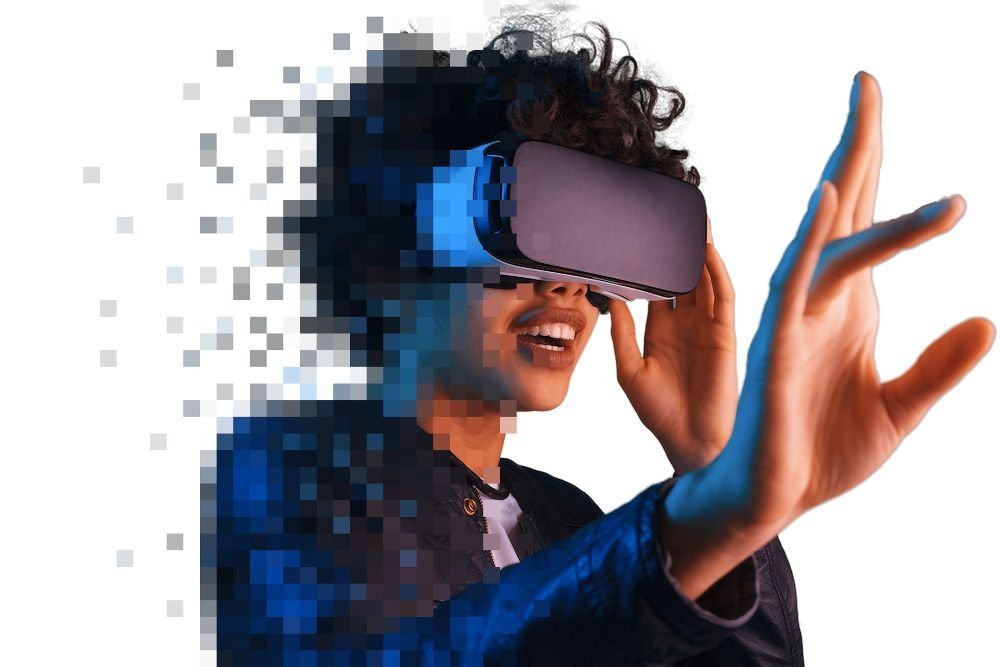
User Experience Design is all about making it an intuitive and pleasant interaction
And, it is witnessing a major paradigm shift in this technological era, as interfaces evolve rapidly.
The integration of Immersive Technologies is transforming the way we interact with User Interfaces. The emergence of Extended Reality (XR) is providing an immersive experience which revolutionizes the User Experience completely. These Immersive Technologies are paving the way for futuristic digital engagement and propelling the rapid evolution of Interaction Design.
Significance of Immersive Design
Extended Reality (XR) marks the dawn of a new and unconventional era, which transcends the traditional Human-Computer interaction framework.
Regardless of time or physical constraints, XR encapsulating AR, VR and MR is being adopted widely and becoming popular across many sectors and industries. These are considered as transformative tools which are shaping the new User Interactions.
Unlike traditional 2D interfaces, the above mentioned technologies pave the way for three- dimensional experiences by utilizing spatial awareness and gesture based interactions. These technologies are making the interfaces more intuitive and natural which requires a shorter learning curve and hence result in better user satisfaction and improved engagement.
Exciting Developments in the XR Space
- Multimodal and Natural Interactions
One of the crucial developments in XR space is the emergence of multiple stimuli to artificially stimulate the human senses. It incorporates gaze-based and gesture-based interactions, olfactory sensors and spatial awareness to improve the immersiveness, helping users to perform natural interactions effortlessly. In effect, it enhances the perception of realism and blurs the boundary between real and virtual world. - Personalization and Customization
XR enables various levels of personalization and customization – such as customizing the layout and view-ports – as per the users’ requirements. This makes the platform versatile and user friendly amongst different categories of users. ‘Avatars’ is one of the most loved features in XR based platforms.
Another game-changer development in the recent times is the integration of Artificial Intelligence (AI) in the platforms. It has made them more adaptable as they sense the context and track individual preferences to customize the experience.
Hardware Developments
Modern XR Head Mounted Displays (HMDs) totally transform the user-platform interactions through a number of latest advancements:
- Wireless HMDs
XR devices are now designed to provide unrestricted movement – eliminating the physical tethering that previously limited the user exploration. This wireless capability significantly enhances the perception of realism and spatial immersion, considerably augmenting the experience. - Standalone Performance
Contemporary XR headsets no longer require powerful external computers for rendering complex virtual environments. Advanced chipsets and AI integration enable standalone devices to deliver high-performance experiences directly through the headset itself. - Portability and Accessibility
Modern XR headsets are becoming increasingly lightweight and portable, allowing users to carry immersive technology anywhere. This expands the potential for work, education, entertainment, and collaborative experiences. The latest XR technologies are replacing traditional hand controllers with gaze-based tracking and gesture recognition systems. Some of the XR platforms also incorporate haptic feedback technologies through haptic gloves, which makes it easier to carry and use anywhere.
The Future of Interaction Design
The integration of AI with AR/VR is creating even more sophisticated User Experiences. By
analyzing user behaviors and preferences, these technologies can:
● Predict user needs
● Create context-aware interactions
● Deliver personalized content in real-time
Emerging Trends
- Metaverse Experiences: Virtual Concerts and Social Spaces
- Contextual Augmentation: Overlaying Digital Information in Real-World Environments
- Intuitive Voice and Gesture Controls
Challenges and Considerations
While AR/VR offer incredible potential, designers still navigate complex challenges as they go around creating satisfying User Experiences:
● Ensuring user comfort
● Managing cognitive load
● Creating truly intuitive interfaces
● Maintaining accessibility
Conclusion
The future of UI/UX lies in breaking traditional Interface boundaries. AR, VR and MR, which are not merely technological advancements but gateways to more natural, engaging digital experiences, will play a crucial role in it. As these technologies mature, they will fundamentally reshape how we interact with digital content, further blurring the lines between physical and virtual worlds.

